#but it's part of the popular folktale/myth for it
Text
➠ Sukuna, the ‘shunned’ child and the demonisation and worship of ‘unwanted’ children in Japanese folklore:
[long read. trigger warning: referenced folktales and practices depict themes of infanticide, religious rituals and child exorcism, demonisation and worship of children, ableism, suicide, implied sa, and period-typical outdated social views. they are not a representation of my personal beliefs. please read with caution.]
New revelations of Sukuna’s past in Chapter 257 made me look deeper into some of the tales and customs from Japanese folklore about children deemed ‘abominable’ in the eyes of society that I had previously noted down and I decided to share as I think they could offer a better insight into Sukuna as a character and what might have inspired Akutami Gege’s depiction of him.
It would be better to start with a bit of the social background of Japanese folklore. I will use the Emishi (an ancient ethnic group of people who lived in parts of Honshū, especially in the Tōhoku region) as an example, the oral tales of whom later blended with Shintō and Buddhist religious concepts and heavily influenced Japanese folklore. It is believed that many of their tales were shaped by the region’s difficult history of natural disasters, famines, and geographic isolation. In the Tōhoku region, infanticide was sometimes used as a form of ‘birth control’ due to repeated famines. The bodies of ‘unwanted children’ were often disposed of in rivers or lakes.
Another important source of such folklore is the city of Tōno in Iwate prefecture, known particularly for Kappa, tales of which could offer a good basis for the beginning of my intended analysis.
Kappa, a green, amphibious, child-like creature with a yellow beak for a mouth and a turtle shell on its back is one of the most popular Yōkai from Japanese folklore. Some researchers say that the darker aspects of Kappa tales in Tōhoku may be an echo of the region’s tragic history of famines and the high rates of infant mortality caused by a harsh climate, natural disasters, and the tax system that was paid in rice. Similarly, many people in Tōno (which is part of the Tōhoku region) believe that tragic history is one of the origins of the stories of Kappa. The Kappa of Tōno specifically are said to be red in colour rather than green, which may allude to the Japanese word for infant - akachan, which derives from aka, the word for red. From this perspective, Kappa are creatures born out of social challenges and disasters. They may not seem all too relevant to Sukuna, but the need to mention them will come up in the later part.
Moving on, at the beginning I mentioned that ‘unwanted children’ were often disposed of in the rivers and lakes, which is also found in the Japanese creation myth. I discussed the variations of the myth in this post about Sukuna previously (you do not need to read it for the moment, but please note that it has many variations), but somehow I did not mention their first ‘inadequate’ child. According to the myth, before they had Kagutsuchi, Izanagi and Izanami had a child as a result of their first attempt at a union, but the child, known as Hiruko (‘Leech Child’), was born deformed. The mistake was attributed to a ritual error on the part of Izanami, who, as a woman, should never have spoken first (i.e. initiated the union). Considering the child inadequate for a diety, they set him adrift in a boat in hopes he would die at the sea. This myth reflects how women and children who were born ‘different’ or seen unable to serve their ‘purpose’ were treated.
Continuing from the myth, Chapter 257 made me think of the tale of Katako, in which the protagonist is born half-human and half-oni. What is Sukuna’s true nature we cannot know for certain. We know he was a human once, but we do not know enough of his past to assume if there was more to him (how and why he as a human might have come to be called the King of Curses will be explained in the later part), but the tale still has the potential to give us insight into Sukuna and his mother’s relationship. The tale has various versions with different endings, but it generally could be summarised as follows:
[A long time ago, a man encountered a man-eating ogre (from here on referred to as oni) while working in the field. He told the oni how much he loved mochi (rice cake), jokingly adding that he could even trade his wife for it. Taking his casual banter seriously, the oni treated him to mochi. The man ate his favourite food to his fill and happily went home only to find that the oni had taken his wife in exchange for the treat. The man searched everywhere and finally found his wife on the island where the oni lived. The man and his wife managed to come back home with Katako (meaning ‘Half-Child’), a child born of his wife and the oni on the island. However, Katako was always ostracised by his human peers (in another version, it is said that he had an insatiable appetite for eating humans). At ten years old, tired of being ridiculed, he asked his mother ‘to cut the oni part of him into pieces’ when he died, and then committed suicide.]
In the tale, Katako’s relationship with his mother seems to be of trust. He is cast out of society by humans and despite his mother being one as well, he does not harbour hate for her, he trusts her enough to leave his final wish upon her. We do not know much about Sukuna’s relationship with his mother, but the manner he referred to her in the last chapter makes it seem that he also harbours no hostility toward her. This tale also shows how children deemed ‘different’ were treated.
In past ages, children, being considered closer to the gods and the Other World, also played the part of intermediary between humans and the gods in Japanese society. This task of mediation between two separate worlds fell to them because they were regarded as incomplete persons (until the age of seven it was considered uncertain whether they would live or return to the Other World: a belief related to the challenges indicated at the beginning). While considered sacred beings different in nature from adults, they were at the same time looked down upon and referred to as kodomo (where ~domo has a negative/belittling connotation), gaki (hungry ghost or demon; brat), or jari (lit. gravel).
Back in the day, people referred to the killing off of ‘unwanted children’ (mabiki or ‘culling’, a common old slang for infanticide) as ‘sending a child back’, and a dead child was given a special non-Buddhist funeral. The various rituals surrounding birth and the child’s upbringing were intended, through communication with the Other World, to transform the child into an earthly being. This aspect of the ritual made me think of Sukuna’s mask and how that part of his face resembles a burn scar (note: i am aware the nature of his ‘mask’ is still not clear and whether it is really one) in some of the official illustrations. It is known that rituals of purification included fire and water magic. Exorcism of demons, aversion of disasters, and other rituals for the removal of pollution were frequent. A katashiro (paper cut in the shape of a man) symbolising the disaster would be burned or floated down the river as well. Personally, I see the possibility of Sukuna’s scar (if it really happens to be one) being from one of such rituals.
Continuing, there is a term - Goryō used to refer to the spirits of those who had died violently (e.g. by murder or execution) and have become gods. It also included those who had died untimely deaths and therefore had been unable to fulfil their purpose in this world. Some notable gods such as Hachiman, Tenjin, and Tenno were once considered powerful Goryō. Great natural disasters and social unrest were attributed to them; rituals designed to appease them were performed, and a cult of such worship evolved. It was (usually) as a result of belief in Goryō that particular individuals came to be worshipped as gods. At times when public unrest threatened the social order, elements estranged or excluded from the ‘normal system/order’ were assigned the status of Goryō and worshipped as such. The cult was intended to purify and renew society. Manga has given us a similar glimpse of Sukuna’s past, where despite being feared (and despised), people were ready to serve him (and pray in his name) for their own well-being. I think Akutami intended to echo this very aspect of society through the scene.
I mentioned that children were considered closer to the gods and the Other World, but not all children were treated equally. One version of the origin of Kamadogami in the Tōhoku region is that he was an ‘ugly child’ from the Dragon Palace who had been killed and was thereafter worshipped at household hearths. Zashikiwarashi, who often inhabits old houses and is said to bring good fortune while he remains, is another household god in the shape of a child or, in another version, the spirit of an unwanted child who, having been killed off, became the guardian god of houses. I mentioned Hiruko at the beginning as well, who was set afloat on the boat in the sea. Despite that, he is in some Shintō shrines identified with Ebisu, the patron of fishermen and tradesmen. Their worship was for the purposes indicated in the previous abstract, to avoid their wrath. Sukuna has not been ‘killed off’ like these children were, but such worship shows us the general psyche of the public.
I indicated that socially inferior and rebellious beings were treated similarly in the previous part. The character Dō of Dōji (童子, meaning child) once meant ‘slave’, tattooed on the forehead, and was closely linked to notions of personal status. It signified one who was not a complete person and also one who had not yet been initiated, in other words, one who did not belong to the order of this world, one who was in this world but not of it. They were despised, feared, and avoided by ordinary people for their strange appearance and magical powers. In some cases they even formed separate ‘child’ villages (dōji mura), calling themselves ‘descendants of oni (demons)’. Since they played the role of demons during the rituals, they were shunned by the nobility as if they were real demons. Could this somehow connect to Sukuna’s title? I do believe there is a possibility this could have inspired his being as the King of Curses.
The ‘ugly child’ who appears in the story of the origin of Kamadogami has parallels in Yokenai, Untoku, Hyotoku, and Hanatarekozo, children who brought good fortune and prosperity to the house in return for offerings to the Watery World of kadomatsu (pine-branch gate decorations for the New Year) and firewood. But despite that, their ‘ugliness’ and names were used as an indication that these children did not belong to this world. It is important to note that socially inferior and rebellious beings were treated in the same manner (here is where the point connects to Sukuna, continued from the next part in depth). Such children were often associated with the colour red. For example, Zashikiwarashi is described as red-haired and red-faced. Kintaro, Shutendoji, and other children born in unusual circumstances (but may not have been considered an ‘ugly child’) and brought up in the mountain wilderness are also said to have had red bodies and were endowed with superhuman strength. I also mentioned that Kappa from Tōno were depicted as red. We see Sukuna often associated with the colour red, particularly, his eyes are red. I believe the above-mentioned could be the reason for that.
Personally, what we know of Sukuna and his past seems to echo these folktales and practices as the foundation of his character. He was a ‘Demon’ for being an ‘abominable’ child, but he was worshipped for this same reason as well. Whether he was born that way after eating his twin in the womb or something happened to him later in life cannot be known yet, but it is clear his ‘abominable’ appearance could have warranted the same treatment from society. It could also explain Kenjaku’s ‘fascination’ with him as a being. We do not know what relationship they had or how exactly they came to know each other, but there is clearly a reason why a being such as Sukuna would ‘work’ with them. We do not know much about Kenjaku either, but it could be possible that they (Kenjaku) once were either (1) one of those ‘priests’ who performed exorcism to purify ‘demon’ children or (2) someone who offered such children refuge (perhaps and more likely, for their own personal gain). It would also relate to the variations of Ryomen Sukuna’s story that inspired Akutami Gege.
[Disclaimer: This post does not intend to demonise Shintoism or Buddhism, but to tell folklore and practices for analytical purposes. Additionally, English is not my native language and this is only a personal interpretation as just another reader that I am sharing in case someone finds it interesting or can use the information for better analysis.]
#oh. ha. guess who zoned out and ended up with this huge info dump.#if anyone actually reads this i will be shocked.#this is probably the last one on sukuna. (watch me change my mind when something new is revealed next chapterㅋㅎ)#jjk#sukuna#jujutsu kaisen#ryomen sukuna#jjk spoilers#jjk analysis#jjk meta#ryoumen sukuna#jjk sukuna#sukuna ryomen#(which one is the actually used tagㅋㅎ)
47 notes
·
View notes
Photo

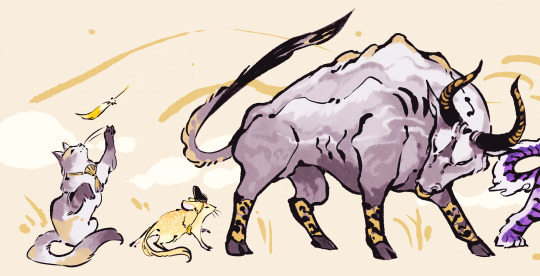
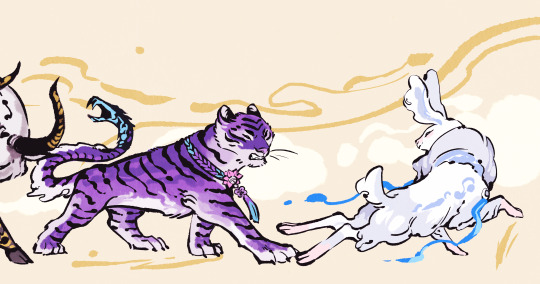
been wanting to do some Chinese Zodiac-inspired MDZS art!
will be doing them in rows of 4~
Row 1:
NHS/Cat - JGY/Mouse - NMJ/Ox - JC/Tiger - LXC/Rabbit
Row 2 >> | Row 3 >>
#Nie Huaisang#Jin Guangyao#Nie Mingjue#Jiang Cheng#Lan Xichen#MDZS#Mo Dao Zu Shi#Zodiac Series#the cat isn't actually an official animal of the zodiac#but it's part of the popular folktale/myth for it#the story between the cat mouse and ox actually parallels the relationship between the nie bros and jiggy pretty well hehe#worth a read if you've got some time#you can find it on wiki#also yes i'm aware vietnam switches out the rabbit with the cat#not what i'm doing here however!#also just that bit of Okami inspired#because i really love that style so good#will be turning them into washi eventually if it all goes well haha
3K notes
·
View notes
Text
I just want to clarify something: If you want to understand how Greek mythology and the Greek gods were represented and received from the Roman world onward, you NEED Ovid's Metamorphoses. For the Roman times, for the Middle-Ages, for the Renaissance, for the Modernity... ESPECIALLY for the Middle-Ages and the Renaissance since the Greek texts were either completely absent or really hard to obtain in these eras, unlike the Latin texts (such as Ovid's) which were everywhere and known by everybody. Ovid's Metamorphoses is, in this sense, a key element on how Greek mythology (but in truth Roman mythology in disguise) was shaped throughout Europe's popular culture and Europeans subconscious mind.
HOWEVER if you want to completely understand and thoroughly study Greek mythology in its - dare I say - "true" form, as in how it existed back in the times of Ancient Greece ; if you want to see and get how the Greek gods were seen and perceived by the Ancient Greeks themselves ; if you want to know the folktales and legends the Ancient Greek cities kept alive through their plays and their poems - do NOT use Ovid's Metamorphoses and get him the f*ck out of your mind, because Ovid did not play any part in actual Greek mythology, as he was a Roman man who wrote in Latin for a Roman audience, and went from simply slightly modifying some legends by mixing actual Latin/Roman religion-folklore in Greek traditions, to INVENTING ENTIRE GODS AND CHARACTERS OUT OF NOWHERE.
(Well not out of nowhere, to be fair, he always had a basis somewhere on late Greek myths or extrapolations of Greek texts - but he still invented a lot of things that then became somehow "canon" retrospectively to Greek mythology, but only through this new Greco-Roman mythology completely rebuilt and reshaped by the medieval and Renaissance authors, artists and scholars)
110 notes
·
View notes
Text
Why is Loki Called Skywalker? Answer: No, it is NOT a Star Wars reference! You have it backward!
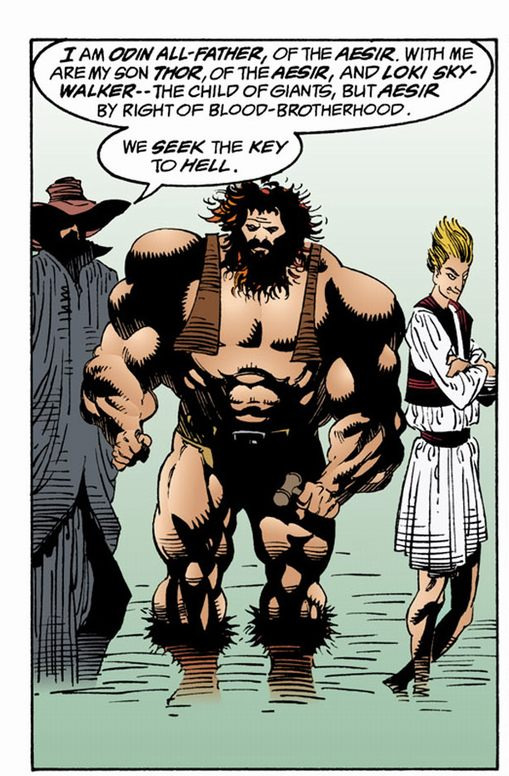
Answer for Why is Loki called "Skywalker" in The Sandman: Season of Mists?
I've seen this questioned a lot lately.
"Why is Loki called Skywalker?" "Is it because he's dressed like a cross between Hon Solo and Luke? Lol! Love it!"
Eh... No. (though I admit he does look like that in that artwork, doesn't he?)
Loki actually had the title before Luke. George Lucas was the one making a reference to Loki, not Loki making reference to George Lucas.
Darth Vader was from the Dutch to mean Dark Father. And Anikin meant a type of giant. Get it? Giant Dark Father. Father of Loki... I mean Luke. It was George Lucas who made the reference. Loki had the name first.

It's a bit like when younger people get weirded out to find out "Canon" originally was used to mean "What is considered true within the Catholic religion." The Catholic church used it first before the word Canon was applied to "Is it true within this work of fiction."
In fact canonization is the term used to mean officially acknowledging someone is a saint.
Now... To answer the question of why is Loki called Skywalker?
Well, he is the trickster God.
Skywalker (sometimes translated as Sky-treader) means Loki could travel fast and easily between realms. (Yes, without need of the Bifrost.)
One explanation for this power was given later with the concept of the Seven-League Boots.
A popular trope in European folktales are a magical pair of boots known as The Seven-league boots (roughly twenty one miles as a league is three miles). The boots could let you travel twenty one miles with a single step and could allow the wearer to walk on anything including shadows, mist, and moonbeams.
You could pass from one world to another such as the realm of Faerie with a mere thought.
One of my favorite mentions of the Seven-League boots is in Goethe's Faust Part 1.
In Marvel's Loki: Agent of Asgard, Loki has the Seven-league boots and this is cleverly tied to the Faust depiction of them becuase Loki stole them from Mephisto (who is also the demon from Faust, besides being an antagonist in Marvel comics).

Some more contemporary variations of the Loki myths suggest he's always had seven-league boots, which accounted for his unique ability to travel easier than the other Norse Gods.
#Loki#Luke SKywalker#Loki Skywalker#Loki Laufeyson#Norse Mythology#Asatru#Norse Myths#Neil Gaiman#Heathen#Heatenry#George Lucas#Star Wars#The Sandman#Sandman#Marvel#Loki: Agent of Asgard#DC Comics#DC
43 notes
·
View notes
Note
do you have any like, folkore book recommendations? it could be of any folklore! although, i mainly know about Greek & Norse. or maybe perhaps, books about witchcraft & demonology?
Anon I am kissing you on the forehead. thank you for this ask
If you like Norse myths, Norse Mythology by Neil Gaiman is a really good starting point – I adore how Gaiman weaves a narrative through the tales so that they feel cohesive. (I think this can be a slightly problematic practise, but imho it's also very effective if you want to just read and enjoy some myths). I read it in one day and then had Many Thoughts for the rest of the week.
Northern Lights: Legends, Sagas and Folk-tales edited by Kevin Crossley-Holland is a collection of Norse and Germanic stories. I've been meaning to reread this one because I don't think I was in the right headspace to really enjoy it the first time, so I can't give much of a review other than I feel it gives a really nice entry-point to anyone who wants to branch out beyond the more popular Norse myths. (Plus, it's up on the Internet Archive)
For a more scholarly deep-dive into Norse myths, I wholeheartedly recommend Gods and Myths of Northern Europe by H. R. Ellis Davidson. It's a deeply fascinating book which looks at the cultural history around Norse myths, then walks through how much we actually know about each Norse god and goddess. (I am still haunted by the fact Davidson says that Heimdall has been described as a "woodpecker god" and then doesn't elaborate)
Moving into Greek myths, I'm a big fan of the Mythos series by Stephen Fry. It's three books, one covering the cosmology of the Greek mythic world; one focusing on the myths around heroes and demigods; and the last telling the story of the Siege of Troy. Like with Gaiman's Norse Mythology, Fry brings a sense of narrative cohesion to the myths, but he's not just telling a story – he talks about the sources and different variations of the myths, which I find so fascinating. I've listened to the audiobooks three times now.
The folklore I'm most into is British Isles folklore. The Fairies in Tradition and Literature by Katharine Briggs is a fast favourite. Despite the title, she also looks at a wide variety of fairy-adjacent folkloric beings. I had so so much fun reading it.
(And on the subject of English folklore, two recent-ish favourites are The Folklore of Sussex by Jacqueline Simpson and the Folklore of Hertfordshire by Doris Jones-Baker; they're part of a collection of regional folklore books which I'm determined to read in its entirety. I really appreciated the way Simpson wrote about witchcraft and the kind of people most often accused of being witches).
I cannot talk about folktale books without recommending English Fairytales and More English Fairytales by Joseph Jacobs. I've only read More English Fairytales, but I've read it... so much. I killed my first copy with love and had to get another one. I picked up English Fairytales in a secondhand shop last week and I'm excited to start reading it. I think both are available online for free, too.
I'll have to go look at my cabin bookshelves tomorrow because I'm sure I'm forgetting some other favourites; I just wanted to answer this now before it got swallowed by my drafts forever
If anyone else has any recs of books on folklore, I would greatly appreciate them :3 (and I'm sure anon will too)
15 notes
·
View notes
Note
"Ghost." Melisandre made the word a song."- Jon(ADWD VI).
"Of Sansa, brushing out Lady's coat and singing to herself."- Jon(ADWD XIII).
Two redhead ladies singing to direwolves.🤔
I am finally getting back to my asks @please-dot!
I re-read the Mel passage, and it's interesting that initially, Jon sees Ygritte, but Mel's voice gives her deception away to Jon only for her to successfully gain Ghost's affections. And since Ygritte was inserted in the scene, it reminds me that Jon was kinda seduced by her singing, so the voice/song idea with a direwolf, and with Jon, is a thing. Also, while I'm thinking of Ygritte, there's a contrast between her telling Jon to send Ghost away during her proposition, and Mel befriending Ghost and encouraging Jon to harness the power there during hers. And considering the scent of summer and a few other word choices, including the references to the girl in grey, I think we could argue Sansa is being hinted at in this scene. So really, we have three redheads? Also, considering Sansa's relationship with her own direwolf, I'd expect something interesting in her dynamic with Ghost that’s distinct.
Anyway, about Sansa's singing specifically, it was once a popular idea that there was some magical power there (I’m thinking it was Fedon’s meta that started that). That perhaps, singing to the Hound was not merely an emotional appeal, but a little magical, and that theory was paired with the idea that perhaps she will sing to Jon as part of helping him return to himself post rez.
I would imagine if there was something to the magic idea, it would be about contrasting Sansa with Mel, one uses magic to override a person's perception or an animal's will, and Sansa restores them to themselves (the Hound was drunk and out of control when she sang to him). On my own, I read it less mystical and more about who Sansa is that lends such power to her singing, but there's a lot of talk about songs/singers in Bran's ADWD chapters. Since myths/folktales have people singing life into things, and that connection to the Earth is something Martin wrote about, I have to think Sansa’s association with Spring (Persephone), is a deliberate invocation of that idea in some manner.
There's all this talk of warmth (in a creepy way) with Mel’s scene, Sansa might be a positive version of that. I suppose in the way that fire is a life-sustaining or a life-threatening force, Sansa's singing might be the good answer to the people who sing for nefarious purposes? Whether or not it's explicitly magical, the redheads interacting with Jon /direwolves is something Martin likes.
You know, reading your two quotes, it really does seem possible that part of why Lady was so docile was Sansa's singing, I had assumed she was just incredibly gentle by nature, but now I think about it, there are quotes about wolves singing, Dany "sings" out a command for Drogon, so maybe magical animals are meant to be drawn into this? I’m intrigued now!
21 notes
·
View notes
Note
ok ok slightly askew suggestion from the standard here but please consider on the starting-Pratchett question also Mort, the start of the Death series. It's about a lil guy called Mortimer having a very unseelie coming of age. the Death series is less popular than the Watch ones for reasonable reasons, the Watch is more... high fantasy comedy, the central thing you expect of Discord?... and I love that too, tbc, but the Death ones have a special place in my heart in part because they are a bit more in the direction of like, that thing you do, you know, the loving reliving and deconstruction of myths and folktales and fey creatures? so it feels appropriate, as a specific recommendation.
or the colour of magic. but for some reason nobody likes rincewind, my beloved,
Aww, thank you Nym! That is vvv much the stuff I dig! Ordered it to my library also. Will be an interlibrary lending showdown of one regional branch vs another & scrunkly man vs the loving deconstruction of myths and folktales.
22 notes
·
View notes
Text
Alright so I'm trying to take my mind off of some horrible stuff rn, so I'm gonna theorize some more about Indigo Disk based on some stuff I just learned
Before we go further, keep in mind that Pokémon does mix and blend some myths and folklore around to get a result, so it could be many things
So let's get talking about it
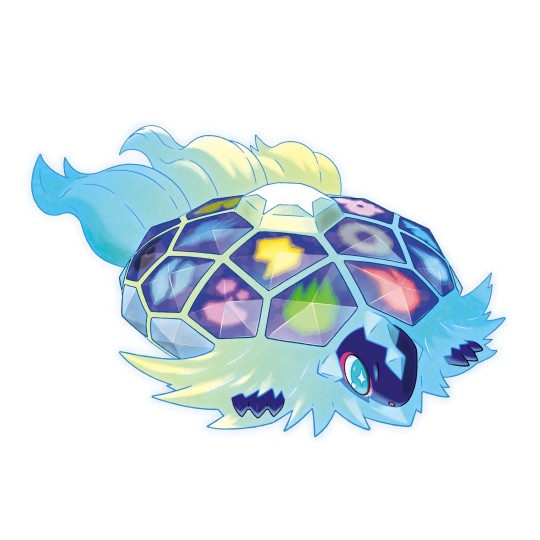
Okay so Terapagos. Pretty obviously our Terastilizing source and the hexagon pokemon mentioned by Heath and the professor.
A few popular theories floating around about it is that it's based on World Turtle mythologies- yes, plural, because it's actually a pretty common mythos found in many Asian religions and even some from Indigenous American religions. Yeah I knew it was mentioned in Hindu, but apparently a lot of people looked at these bad boys and said "yeah that could hold us." It's neat
BUT Terapagos itself is neat in that it's name also references Galapagos Islands, famous for Darwin's study of evolution and also home to Galapagos tortoises.
Could be something, could be nothing.
On a different note, you know how everyone figured out that the Teal Mask legendaries are based Momotaro? There's another Japanese folktale that could bear some significance here.
The Tale of Urashima Taro
I am going to paraphrase, but essentially, a guy some kids messing with a sea turtle. The guy stopped them and helped the turtle back to sea. To thank him, the turtle offered to show him a place called Ryugu-Jo- or as it's known to us, the Dragon Palace, an underwater castle at the bottom of the sea, where Taro met a princess named Otohime, and was welcomed and treated handsomely for several days. After a bit, Taro became homesick and wanted to return home. Otohime gave him a box called the tamatebako, warning him to never open it. When Taro came back to land, he found that 300 years had passed. Everyone he knew and loved had died, and everyone basically thought he sank at sea. Taro opened the box thinking it might help him, only for a puff of smoke to transform him into a feeble old man.
Now let's look at what's represented here:
1. Sea turtle
2. Underwater kingdom
3. Taro is warmly welcomed
Obviously Terapagos is the sea turtle here
The underwater kingdom?

Maybe not so much a kingdom or Dragon Palace, but it is a very fancy underwater school dedicated to battling
And as for the warmly welcomed part: we're exchange students, by this point already Champions of Paldea, and we've met and hung out with Carmine and Kieran in Kitakami- plus given how Pokémon usually is, we're most likely given the welcome wagon.
Now the question is this: given the ending of Urashima Taro, are we to expect something bad to happen to us?
Idk about 300 years passing, but given the history that Heath endured in Area Zero and the madness that eventually took over the professor, it's probably safe to say this turtle may not be so innocent.
Of course, there's another theory floating around that also makes sense: Atlantis. Everyone knows Atlantis, especially modern interpretation that it's a lost, ancient civilization home to all sorts of ancient technology. Blueberry Academy most likely could fit this as well- but... maybe also the Dragon Palace.
Think about this: who makes a damn school underwater? I know mine flooded in heavy rain, but we usually tried to AVOID the water, especially water that could lead to thousands of pounds of pressure breaking in and drowning us all. That and the school specializes in battling- why here?
Unless... this facility is looking and preparing for something.
A place? An object?
Maybe Terapagos IS the object and its being kept there- another reason to be out at sea is to hide. After all, how did it leave Area Zero otherwise? Why the secrecy with the name in the books?
Now let's consider this: who would have knowledge of Terapagos? The professor obviously, but they're dead
At least... one of them.
In Violet, Arven's mother left shortly after he was born. In Scarlet it was Turo. In fact, lots of employees left the original professor.
Theory time: the opposite professor took Terapagos to Blueberry Academy to hide it.
We know that the professor invented Tera Orbs about 10 years ago- that means that they had access to Terapagos that recently.
We also know the AI hated the professor's plan and wanted to stop it at all cost.
What if the deadbeat parent came back for Terapagos? Or eas entrusted with it by the AI at some point?
We also know BBA is a fairly recent build in comparison to N/A Academy, which has been around for hundreds of years.
My theory is that the opposite professor had the school made- or maybe was hired into it- in order to hide Terapagos or use it for their own purposes.
Hell it may not even be the professor. It could be any other of his employees.
Anyway that's enough theorizing. For all we know it's all unrelated and Terapagos just shows up somehow.
22 notes
·
View notes
Photo
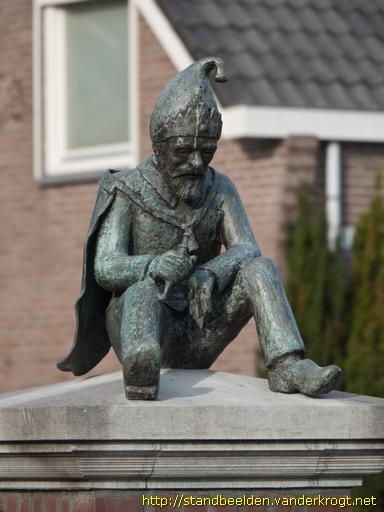

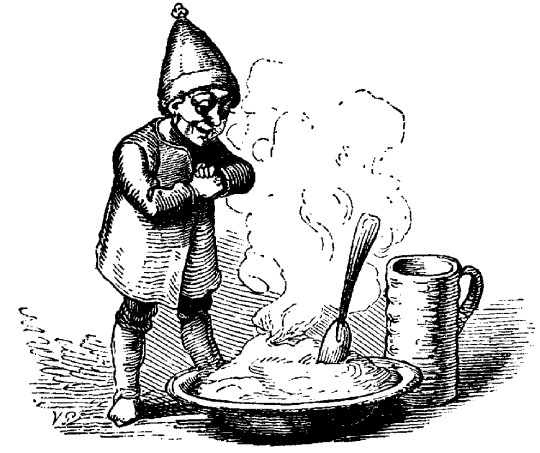
De Kaboutermannekes [Dutch/Flemish folktales]
The word ‘kabouter’ is often translated as either ‘dwarf’, ‘leprechaun’ or ‘gnome’ and is most commonly used to refer to tiny human-like creatures with red (often pointy) hats. In fiction, they often live in mushrooms. Henderson, in the 19th century, translated the word to ‘Redcap’ and this is a still a common appellation in English for these creatures. He considered them a kind of goblins.
Today, kabouters (also called kaboutermannetjes, or kaboutermannekens in old Dutch and modern Flemish dialect) are very popular creatures in Dutch and Flemish children’s stories, both in books and tv series. Examples include Kabouter Plop (children’s show) and Kabouter Wesley (parody show about a foulmouthed, cynical kabouter).
In previous centuries, however, these mythical creatures were often considered evil and dangerous.
In Linden (Leuven, Belgium), there’s a myth about the local church. It was said that the tower was built by kabouters, and they were paid a huge amount of gold for this work. But the dwarves became so greedy and obsessed with their money that they hid it in a basement deep below the local castle. They stayed with their gold at all times, counting it over and over, until they all died of starvation. Their ghosts haunted the castle since then, until the building was demolished to make way for a large farm, or so the legend goes.
Hoeleden, Belgium, has a myth about two opposing factions of kabouters. The area had two large hills, called the Konijnenberg (literally ‘the rabbit mountain’) and the Zilverberg (‘the silver mountain’). The former was home to a community of kabouters with red boots and hats, whereas the latter housed a settlement of kabouters with white hats and boots. The two factions warred against each other until both were destroyed in a huge decisive battle one day. It is said that the sheer amount of blood caused a local pond to flood, and this created the Pierenbeek stream (‘pierenbeek’ appears to be an informal name. I found the location of one Pierenbeek but it’s in Antwerp). There were still some kabouters in the area, though. It was said that you could convince them to do chores for you in exchange for a bottle of liquor.
In the Dutch Kempen area, there used to be a large hill that was supposedly inhabited by kabouters. They were notorious for stealing livestock (anything from cows and oxen to ducks and chickens). If anyone attempted to retaliate, hundreds of dwarves would swarm him and beat the shit out of him.
One story tells of a young farmer who was madly in love with a girl named Mieke. Mieke’s father disapproved, because the young man was too poor. His farm owned 15 cows, but all of them were stolen by the kabouters. Feeling like he had nothing left to loose, the lad ventured to the kabouters’ hill one night. He waited until sometime after midnight, when kaboutermannetjes arrived with a stolen cow, and a large door opened in the side of the hill to let them in. The young man quickly ran after them, but was noticed almost immediately. The gnomes swarmed him and beat him, but he pleaded ‘Please, stop hitting me and hear me out! I only came to ask a favour, and if you dislike it, then please let me leave, or just kill me because I’d have nothing left to live for.’
The kabouters listened and eventually felt bad for the boy. He was allowed to leave and even got all of his cows back. The next day, the lad found a huge sack of coins on his table: this was a parting gift from the kabouters. He soon married Mieke (her father couldn’t refuse anymore, since he was rich now) and they lived happily ever after.
But soon, everyone had heard of this story and many people went to the kabouters’ hill to ask favours. The dwarves grew tired of this and eventually decided to pack their things and leave the hill. And they were never seen again.
Finally, many stories tell about kabouters who had magical powers. One such tale from Noord-Holland (the Netherlands) is about a kabouter who lived underneath a (human) house. Every night, he would crawl out of a hole in the fireplace, and bless the home and its inhabitants in exchange for food.
Sources:
Peeters, K. C., 1979, Vlaams Sagenboek, Davidsfonds, Leuven.
abedeverteller.nl/kabouters-in-je-huis-een-zegen-of-een-vloek
William Henderson, 1879, Notes on the Folk-Lore of the Northern Counties of England and the Borders.
(image 1: statue of Kyrië, king of the kabouters, located in Hogeloon, the Netherlands. Supposedly, Kyrië was accidentally shot and killed by a hunter. Image source: standbeelden.vanderkrogt.net)
(image source 2: fieggentrio.blogspot.com/2020/04/kabouterkoning-kyrie.html)
(image source 3: Vilhelm Pedersen, illustration for a fairy tale by Hans Christian Andersen. The image depicts a Nisse – a Danish creature – but is sometimes used on the internet to depict kabouters, which are similar in many aspects)
33 notes
·
View notes
Text



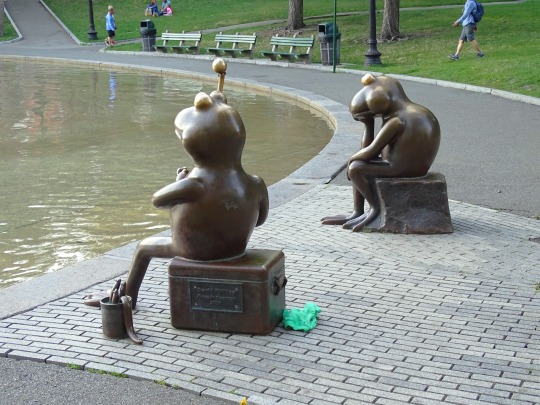



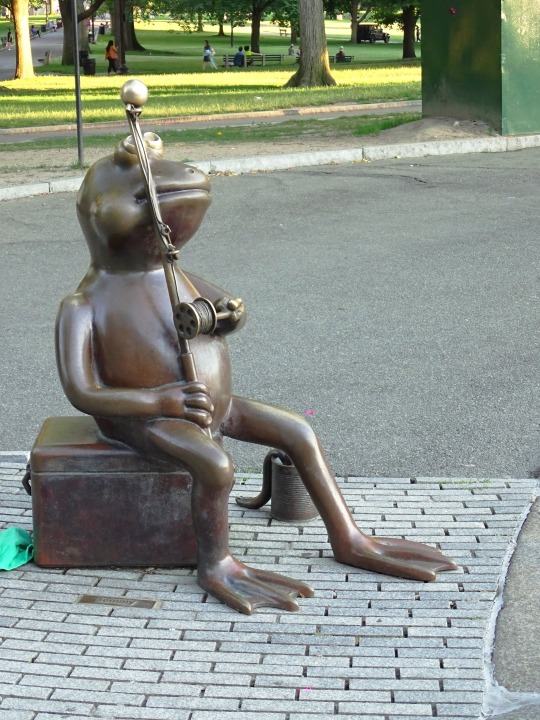






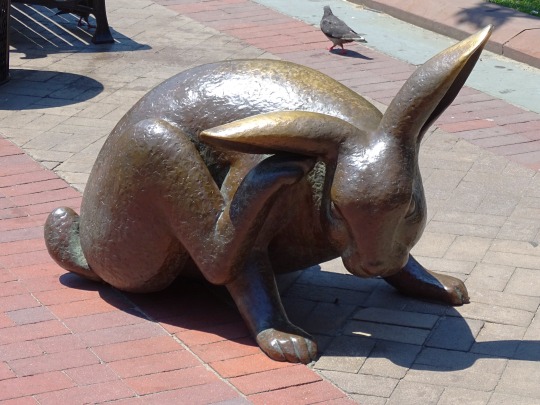
National Tell a Fairy Tale Day
Gather round the fire, and make yourselves comfortable… Tell A Fairy Tale Day is all about exploring myths and stories, old and new. From grim(m) tales to urban legends, tap the dark corners of your subconscious and see what you find…
History of Tell A Fairy Tale Day
The sharing of magical, otherworldly stories is a tale as old as time. While the term ‘fairy tale’ was coined in 1697 by Madame d’Aulnoy (conte de fées in her native French), it’s likely that some fairy tales originated as early as the bronze age over 6,000 years ago. And for most of history, fairy tales have been passed on not in written form but via the oral tradition, with each generation telling and dramatizing stories to the next.
The fairy tale’s ancient roots can be traced all over the world, from Vikram-Betaal in India and Aesop’s Fables in Ancient Greece to Arabian Nights in the Middle East. It was during the late 17th to 19th centuries that fairy tale collectors emerged, most famously Charles Perrault and the Brothers Grimm. While the Brothers Grimm aimed to preserve folktales in their pure form, documenting them in the way they were told by rural peasants unable to read or write, Perrault and others reworked fairy tales for literary and artistic effect, with some writers such as Hans Christian Andersen dreaming up their own new stories.
As the fairy tale’s history emerges into the modern day, it’s clear that the genre is still as popular as ever – look no further than the success of Disney movies to see how these stories continue to capture our hearts and imaginations. In fact, the famous Disney castle is inspired by Neuschwanstein Castle in Germany, built by none other than the Märchenkönig (fairy-tale king), Ludwig II of Bavaria, himself. Perched on a rocky hill and with horse-drawn carriage rides up to the front door, Neuschwanstein and its elaborate interior abound in myths and legends – the castle is even home to an artificial grotto!
By celebrating Tell A Fairy Tale Day, you’ll be continuing the magical tradition that has ensured fairy tales are still very much part of our lives to this day.
How fairy tales change over time
Perhaps one of the most interesting aspects of fairy tales is how they change over time. Simple plot structures, motifs and archetypal characters recurring across many cultures make these stories rife for adaptation and reinterpretation.
Although nowadays we usually associate fairy tales with children’s literature, you may be surprised to learn that many of today’s beloved stories have rather dark and disturbing origins. Imagine a world in which no woodcutter comes to save Little Red Riding Hood from the wolf’s belly, or in which one of the ugly stepsisters cuts off her own toes so that her foot fits in the slipper! From the 18th century onwards, many fairy tales were toned down and reworked so that they were more suitable for children.
These stories and the genre itself have also been adapted and reinvented for different time periods and cultures. Alongside original modern-day fairy tales, there are also various retellings, for example in urban settings or different countries. One particularly common type of retelling comes from women writers. Authors such as Angela Carter and Margaret Atwood have taken what are often seen as outdated tropes about women and reinvented them – the damsel in distress becomes the plucky heroine, and the trapped bride leaves her ogre husband for her happily ever after.
Why fairy tales are important
As it is often claimed Albert Einstein once said, “If you want your children to be intelligent, read them fairy tales. If you want them to be more intelligent, read them more fairy tales.” We might not expect such high praise for fairy tales from a world-famous theoretical physicist, but Einstein recognized the importance of the imagination. Fairy tales are incredibly valuable for both children and adults when it comes to learning about the world in which we live and developing our capacity for creativity. Fairy tales have also been considered fertile ground by psychoanalysts. With their twists and turns, age-old themes and familiar characters, our favorite stories may reveal not only the workings of our personal subconscious but also the fundamental elements of our collective psyche.
How to celebrate Tell A Fairy Tale Day
It should be clear by now that, when it comes to celebrating Tell A Fairy Tale Day, you really can let your imagination run wild! And while it’s a day that kids will love, it’s also a great occasion for adults too.
Gather your friends and family and take it in turns to share your favorite stories with one another. Time to brush up on your acting skills, as the more dramatic enactments the better – whether you’re good at impersonating a wicked witch or excel at acting out the characters’ quest through the enchanted forest, you’ll want to really make the tale come to life for your audience. And why not sit around a bonfire toasting marshmallows or string up some fairy lights in your living room to add to the atmosphere?
Alongside sharing the stories we know and love, fairy tales are the perfect genre for getting creative and honing your writing skills. Take a well-known story and tweak it to fit a different time or setting, or have a crack at inventing your own. It may well start with ‘Once upon a time’, but it’s completely up to you whether there’s a ‘Happily ever after’! Many libraries and literary organizations will also share stories and creative resources and even hold events to help mark the occasion.
If writing’s not your thing, then there are plenty of films and programs based on fairy tales for you to enjoy. Disney’s Snow White and the Seven Dwarves, Cinderella and The Little Mermaid are just some examples of the media giant’s adaptations, while movies and TV series such as Into the Woods and Tell Me a Story interweave and retell various classic fairy tales for new audiences.
And if you feel like going all out, why not host a fairy tale themed party? Encourage your guests to come in fancy dress, put on an enchanted feast of yummy snacks such as gingerbread houses and toadstool cupcakes, and throw some legendary party games like hunt the pea and castle building.
However you choose to celebrate Tell A Fairy Tale Day, it’s sure to be a magical occasion!
Source
#Hans Christian Andersen Statue by Georg John Lober#Central Park#Manhattan#Little Mermaid by Edvard Eriksen#New York City#Copenhagen#København#Denmark#summer 2006#public art#Den lille Havfrue#Tell a Fairy Tale Day#NationalTellAFairyTaleDay#26 February#Alice The Way Out by Liliana Porter#mosaic#MTA New York City Transit#Alice in Wonderland#Boston Common#Frogs at Tadpole Playground by David Phillips#Boston#original photography#travel#vacation#tourist attraction#landmark#USA#Tortoise and Hare by Nancy Schön
5 notes
·
View notes
Note
OMG you are in folk fairytales and legend Please can you tell me some of the cuteer ones you found even better if involving bears ? I loved interact with your OC too thanks fir joining and pls relax too from time to time and do not rush in answering me either 🙏🙏 I wish you a wonderful day 🤗🤗😘😘
Yesssss, I love them! Since a very young age I have been an avid reader/student of folklore, fairy tales, myths, and legends.
Below I talk more about my personal history/feelings on the topic, and end with my three favorite fairy tales. I hope they are “cute” enough for you!
But first I wanted to answer your question about stories featuring bears.
I tried to think of one in my memory where a bear played a prominent part, but turned up empty. I mean, yes, there is the standard “Goldilocks and the Three Bears”, but I assumed you wanted to hear about something off the beaten path.
So I dug around and found this one for you:
"The Bear in the Forest Hut".
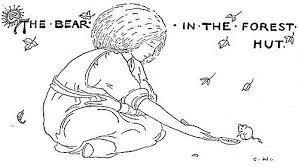
It is a Slavic folk tale about a prince who was cursed to take the shape of a bear, and the brave and kind woman who helped him out of that curse. She had the typical misfortune to have a stupid father and an ‘evil stepmother’ who tries to stop anything good from happening to the heroine.
I liked this one because there is plenty of detail about the trials and tests the girl goes through in order to earn the bear’s trust and break his curse. Even more unique is how the story doesn’t just end right when the curse is broken (like so many folk tales). Instead, it goes on at length about how the two get married, travel over his kingdom, and what happens to the stepmother and stepsister.
@queengiuliettafirstlady What are some of your favorite fairy tales and myths?
How did I come to love fairy tales so much?
I think I can trace it back to my godmother, who was an amazing storyteller. She was Irish, so most of the tales she told me came from the British Isles and dated back to the 12th Century or earlier. The stories I most vividly remember her telling me were about the 3rd Century charismatic (but slightly foolish) folk hero Finn MacCool (or Fionn mac Cumhaill) and his very very clever wife Sadhbh.
As I entered my preteen years (1990s, pre-internet era) a library was built within a 15 minute drive from our rural town. I had never had such a frequent exposure to books before that, except our small school library. My mom would take me to the new public library often and I devoured every book they had on fairy tales and legends.
When I started college, the trend of turning ancient folktales into modern, dark retelling had begun to rise in popularity. Not only was my backpack full of those every week, but now I also had access to scholarly papers through our inter-collegiate online system! I could read published research on people all over the world, those who retraced Charles Perrault’s steps, or compared similar narratives, or discovered a new translation of an old work. It was also during my college years that I discovered The Aaarne-Thompson-Uther index, which categorizes the plots and themes of fairy tales.
When I learned about Perrault and the ATU Index, it changed my self-image.
Of course kids like fairy tales, but we are expected to grow out of those stories as we mature. I still had a deep love of folklore and myths well into my 20s and that made me feel a little silly and childish. But when I discovered that Charles Perreault (a historian in the 17th Century) believed the stories being shared in the oral tradition were important enough to be written down for posterity, that boosted my spirits. And when I stumbled across the ATU Index (begun in 1910, and continues to be updated annually still to this day), which took fairy tales seriously as anthropological artifacts, I was vindicated even more.
These historical efforts were proof that folk lore, legends, and fairy tales weren't just for children.
This short article is a MUST-READ for anyone who wants to have their love for storytelling rekindled and get pumped up to talk about fairy tales. It’s all about hope and courage. I especially appreciated the excerpt from Katherine Rundell when she talks about “the hope that is sharper than teeth”
As I studied more and more obscure stories from around the world, I soon had a list of my top 4 favorites that I came back to:
Katie Crackernuts
The Twelve Dancing Princesses
Beauty and the Beast
The Myth of the Selkie
The middle two I have owned a few printed copies of. They are quite common and have many retellings/variations. But Katie Crackernuts was a story I could only read online; I had never seen it in print.
There are actually similarities between parts of all three stories, which is probably why I love them so much.
I know you asked for ‘cute’ ones, but I don’t know if these really are that adorable. They all have happy endings for the heroines. Does that count? LOL
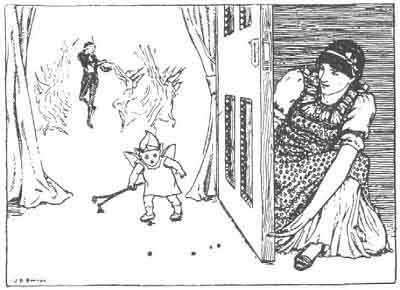
Katie Crackernuts (collected by Andrew Lange, first printed 1889)
This is a Scottish story about two sisters, one plain but clever (Katie) and one beautiful but simple (Anne). Despite this difference, they loved and supported one another as much as two sisters could. Through no fault of her own, Anne was cursed (you guessed it, by an evil stepmother) with the head of a sheep (or sometimes a donkey or goat, depending on the version) because the stepmother was jealous of her beauty. Katie put a hood over Anne to disguise her and left the house together, never to return.
They eventually came to the kingdom where there was a sick prince. His parents offered rich rewards for anyone who could heal his mysterious disease. Katie knew there had to be a reason normal medicine wasn’t working. She thought perhaps he was under a curse, too. Yep, he was going out at night in a trance to go under a hill to dance with fairies. So she watched and listened and investigated until she discovered the cure and how to administer it. Turns out the way to lift her sister’s curse was under that hill, as well!
She out-smarted the fairies, collected the items from them, and followed the instructions precisely. He grew well and discovered he loved her during all their time together while she was patiently investigating. When she used the cure on her sister, Anne’s sheep head turned back into a human one and the prince’s brother fell in love with her on the spot (of course he did). It was a lovely double-wedding.
The Twelve Dancing Princesses (collected by the Brothers Grimm, first printed 1812)
This is about twelve sisters who are constantly tired and ruining their expensive shoes every night, and no one can find out why. The king has offered rich rewards and even marriage to the most beautiful of his daughters, but any man who steps up to the challenge either dies, fails the task, or is never seen again. Until one clever man (who has been watching this happen over and over) decides to try solving the mystery. The eldest sister (the most intelligent and haughty of the siblings) tries to stop him each time, but he outsmarts her as he follows the princesses into a fairy forest where they dance all night until their shoes fall apart and they drop from exhaustion.
Just like Katie in the story before, he is observant and waits until he has all the information and proof he needs to confront the princesses. He convinces the king, who is angry that his daughters were escaping every night. The man explains they were under a spell that compelled them to sneak out. The king offers him the most beautiful daughter (who is also the youngest and the most silly), but the man opts to marry the eldest because she was the only one who came close to matching wits.
Katie Crackernuts has much in common with The Twelve Dancing Princesses.
Both have very strict rules for entering into the world of fairies, and the “wasting sickness” that comes upon a human who spends too much time in that world (which is also a metaphor for other maladies that were rampant during those centuries, such as tuberculosis). I enjoy that theme of “Good luck if you’re beautiful because your looks won’t save you. You need to be wise, patient, and clever in this world.”
Beauty and the Beast
This was one of my favorites long before Disney made their movie. Almost everyone knows how the story goes, so I won’t make this long post even longer by summarizing it here. The bravery and selflessness of the heroine was very inspiring to me, and I loved the idea of being surrounded by talking furniture and not a single human! I was a very introverted kid. And I guess I loved the idea of a sad prince in an unloveable disguise who needed to feel loved.
Another thing I think is neat about that story is there is an actual author: Gabrielle-Suzanne de Villeneuve, published the story in 1740. Most folklore and fairy tales have a shared origin and no single creator. Not so for Beauty and the Beast. This one has a bonafide author, which makes it unique. Not only that, but the author was a woman!
What Beauty and the Beast has in common with Katie Crackernuts is charity, mercy, humility, and selflessness.
The heroine not only saves herself, but she saves those who are entrusted to her. Who needs a prince, right?? Katie didn’t have to leave home to take care of her cursed sister, but she did. She didn’t have to agree to help the sick prince, but she did. Belle didn’t have to sacrifice herself in her father’s place in that unreasonable pact, but she did. She could have been disagreeable, rude, and throwing herself a pity party the entire time she was captive in the Beast’s castle, but instead she did her best to keep her spirits up and not hate her captor. (Readers: don’t come at me with the whole “Stockholm Syndrome” comment trying to be witty; it’s an old joke that was never funny in the first place.) Katie also tried hard to make the best of an awful situation, and she was never resentful to Anne or put her on a guilt trip. I was inspired by the important values and virtues portrayed by these two heroines.
The Legend of the Selkie
You asked for ‘cute’ stories, but this last one is anything but cute. The Celtic legend of the Selkie is heartbreaking, and there is hardly ever a happy ending. I heard briefly about it as a kid, but never found a published story to read. The oral tradition of the tale goes back to the 13th Century, but it didn’t make it into many books. Then the movie The Secret of Roan Inish came out in 1995. I was 15 at the time and didn’t have my driver’s license yet, so I begged a family member to bring me to the only theater in the entire state that was showing this independent film, over an hour away. It was magical. I bought the DVD as soon as it was available. It was the only thing I could find at that time (remember, the internet wasn’t really used for entertainment in 1995 like it is now) that displayed the Selkie myth, which is:
There are some special seals in the sea who can shed their seal-skin and turn themselves into human women. They are beautiful, quiet, and hard-working. And therefore they are much sought-after as wives by the lonely fishermen of the islands. The legend says that if you find a Selkie in her human form and take her seal-skin away from her, she is yours for the rest of your life. You can imagine the life of servitude that awaits the poor woman! She is usually desperate to turn the house inside out looking for her seal skin and return to the sea, or if she doesn’t find it she will murder her husband.
Fascinating!
Oof, okay. That post went on really long. Sorry. When I start to talk about fairy tales and folklore, I have a difficult time keeping it short, lol. And I didn't even get into the Greek myths! Yikes.
#fairy tales#storytelling#folklore#legends#myths#folktales#Katie Crackernuts#Kate Crackernuts#Selkie#Beauty and the Beast#The Twelve Dancing Princesses#Twelve Dancing Princesses#The Bear in the Forest Hut#Irish legend#Slavic stories#Finn MacCool#Fionn mac Cumhaill#Charles Perrault#Aaarne-Thompson-Uther index#ATU Index#Andrew Lange#Brothers Grimm#Grimms Fairy Tales#Gabrielle-Suzanne de Villeneuve#my asks#Celtic folklore
4 notes
·
View notes
Text
Lore | Horned God
[This one is a little longer]
Horned God may in fact be the horned GODDESS [hypothetically]
[Deer Goddess]
The Horned gods origins are a little tricky. There are sources that claim that the Horned god was originally the horned goddess.
Cernunnos, originally derived from old pagan myths of a horned ‘Goddess’ , a story about how a deer would turn into a woman.
In folklore society in 1930, a researcher put his theories on a matriarchal Hunter gatherer society ruling highlands of scotland as a pre-celtic deer cult. J.G. Mckay.
Modern Scottish Gaelic and modern Irish Gaelic dictionaries both give the word Fiadh having two meanings: “Deer,” “God.” The deer was some sort of god, as well as divine messenger, some type to the Goddess Artemis. How you had to ask permission to hunt.
In Faerie lore, deer are their cattle and a common form of Faire women, Witches can transform into mice, hares, cats or black sheep but never the sacred deer.
In many pagan animal-cults, the priest or priestess would often wear an ornamental headdress of the sacred animal.
There are Scottish folktales of a deer woman that Mckay theories could be explained by this real practice.
In these folktales, a hunter, who has been stalking deer, observes, when putting up his gun to take aim, that the animal changed into a woman.
He falls in love with her. Adventures ensue and they are separated until he finds her again on a distant island and they finally marry and live happily ever after.
The Deer Cult and the deer-goddess cult date back from a remote matriarchal time. Diana as well as Artemis and her nymphs, would appear to be classical examples of a hint at this older heritage. No one in patripotestal times, it would seem, would dream of inventing a feminine hunting divinity.
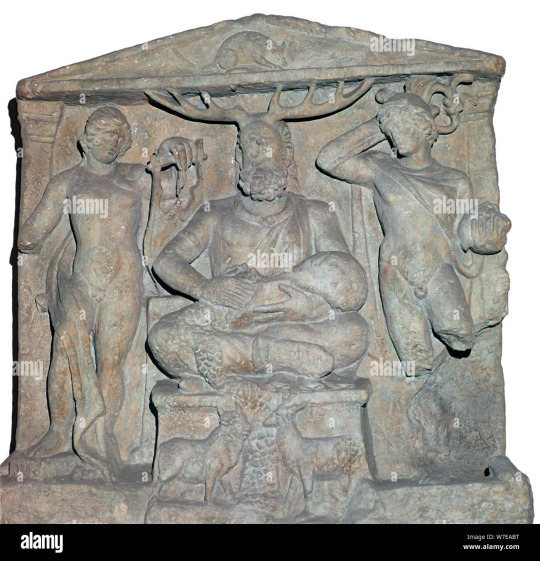
Celtic Society developed and created a masculine Horned God from the deer goddess and keep the feminine character next to him as a reminder as his shadow. By the stage the Deer Goddess matriarchy would have been in decay and her worshippers have grown fewer. While worshippers of the male Cernunnos became ever more numerous.
Today, there are whispers of this old Deer Goddess Cult in traditional German and English stag dances that are performed by men who dress themselves in women’s clothes, thereby preserving a memory of a former time when stag-dances were perfect by women, and of a later time, when the religious functions of women were usurped by men.
Shakspearen roots.
Swiftly moving on a couple thousand years, we come to the iconic bard, Shakespeare. Elizabethan english comedy abounds with images of the cuckold- a man with horns on his head, symbolising his shame that his wife has taken up with another man-
Herne the Hunter- from Shakespeare to popular culture. So at least thats where the name came from.
Robin Hood Myth [Horned God]
[Authors note: This website is not secured so take care also- these types of websites were the ones I’ve seen and how I came to know about Wicca]
The Horned God is the father of Robin Hood? And it’s Pagan?
The Horned god is a central theme/character in many european pagan faiths. Generally seen as a deity of woods, wild animals, hunting and virility he is an elemental force of nature and commonly identified as a male deity often the consort of the female force or earth mother.
This is the case in the Wicca religion where the horned god is worshipped as both the child and the consort of the great Mother, Triple Goddess.
There are some evidence that the idea of the ‘Lord’ and ‘Lady’ in Wicca is part of ancient tribal rites but such evidence is limited.
For many modern Wiccans the ‘Horned God’ sometimes known as the Great God or Great Father is his own father.
Mating with the Goddess at Beltaine then dying at Summer Solstice only to be reborn as her child at the new year, or Winter Solstice, he is a key symbol in the birth/death/Rebirth cycle.
The Horned God is known as the ‘Hunter’ has strong links in Britain with the idea of ‘Wild Hunt’ he is the taker of life, a vengeful spirit, hunting evil with a pack of demonic hounds.
He is often portrayed as carrying a bow.
The british Herne the HUnter is rumoured to survive still as a powerful spirit.
Herne is linked to Robin Hood just as Robin provided for the needy, Herne provided food for the tribe.
In some legends he is listed as Robin Hoods father, although this adds greater status to Robin Hoods legends.
He is portrayed has either having horns or Antlers, as well as his image is full of Phallic symbols.
Locations: There have been representations of Fertility icons for thousands of years as in the Altars of Stag Horns which have been found in Temples of Apollo and Diana in ancient Greece.
He is sometimes depicted with hooves or Goat hindquarters, a link to the Greek God Pan. Which of course had christians mistaken this horned fello for Satan.
Stag God image can be found in a cave painting at Trosi-Freres in France. This painting is thought to date around 13,000 BC known as the “Sorcerer” and depicts a half human, half stag spirit. This image is often seen as a representation of a shaman dressed as a stag performing a rite to ensure good hunting.

The Horned God is not an exclusively Wiccan concept as one would expect as many Pagan faiths have similar roots, the Horned god concept can be seen in the Greek God Pan, the Celtic god of the underworld and animals cernunnos, the Roman Janys, Tammuz and Damuzi the consorts of Ishtar and Inanna, Osiris and Dionysus as well as the Green Man mythological figure in the Uk.
The link with Osiris and Cernunnos which were both gods which guarded the underworld or judged souls and Osiris was both brother and consort of Isis seen by many as the Egyptian mother goddess. Cernunnos was a fertility god of the pagan celts and Gauls and is thought by many to have been the basis for the christian concept of the horned devil being a half man half goat guardian of the underworld and certainly a rival faith for early christianity.
The link between the Horned God and the Green man in English folk lore is very strong and even today many pubs in UK villages bare the name “The Green Man” often with a very pagan image on the pub sign. The Green man also known as ‘Green Jack’ or ‘Jack in the Green’ is an English spirit of trees and plants with the power to make it rain and crops grow well. The Green man is thought to share his home in the forest with forest fairies sometimes called “Greencoates” or Greenies depending on the region of the UK. In popular imagery the Green man is shown as face peering out of foliage, his wood spirit companions and fertility imagery clearly links him to Pan and also as a sort of sanitised Hern the Hunter and Wild hunter.
For many modern Druids and Wicca the Horned god is a key part of the birth, death, rebirth cycle and mentioned in many rites and celebrations, his imagery is powerful and has a strong attraction to many as a symbol of almost suppressed power / violence and male sexuality. Some modern pagans reenact the ancient rite where the hunter who brought the most/ best meat to the table was dressed in stag horns and furs and was rewarded with the right to couple with the priestess representing the goddess sometimes in front of the whole tribe. The few pagan groups that reenact this mostly do so symbolically or with the hunter and goddess being intimate partners already with only a small part of this “Great Rite” being performed before the rest of the coven.
#horned#god#horned god#LORE#witch#witchtok#witch community#witchcraft#witchblr#wiccan#pagan#wicca#Pan#belief#wiccan religion#baby witch#baby#Herne the Hunter#herne#the#hunter
2 notes
·
View notes
Text
...And Now
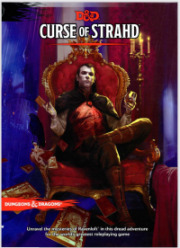
...For Laura and me, those were the elements that truly defined Strahd von Zarovich--a selfish beast forever lurking behind a mask of tragic romance, the illusion of redemption that was ever only camouflage for his prey.
Initially we were going to title the adventure Vampyr one of a series of games we called Nightventure that Laura and I were self-publishing back in 1978. The castle was called Ravenloft, and when Halloween came around each year, our friends asked us if we could play "that Ravenloft game" again ... and so the better title won out. It was, in part, because of this design that I was hired by TSR, Inc., to write DUNGEONS & DRAGONS adventures in 1982. Soon thereafter, 16 Ravenloft was published.
Since then, fans of Ravenloft have seen many different creative perspectives on Barovia (a country which, by absolute coincidence, is featured in a 1947 Bob Hope movie called Where There's Life). It continues to be one of the most popular DUNGEONS & DRAGONS adventures of all time. In its various incarnations, each designer has endeavored to bring something new to the ancient legend of Strahd, and to each of them we are grateful.
But the vampire genre has taken a turn from its roots in recent years. The vampire we so often see today exemplifies the polar opposite of the original archetype: the lie that it's okay to enter into a romance with an abusive monster because if you love it enough, it will change.
When Laura and I got a call from Christopher Perkins about revisiting Ravenloft, we hoped we could bring the message of the vampire folktale back to its original cautionary roots...
I would entirely sympathize with “people are treating or writing Strahd, this character we created, with a degree of sympathy that suggests they misunderstood the original character.” I roll my eyes at efforts to pretend that famous vampires like Dracula, Carmilla--and Strahd--can be divorced from sexual predation without ripping the core out of their myths. I have much less sympathy for “everyone must write vampires as one-dimensional monsters.” Twilight is, of course, the easiest of easy targets (and if there was any ambiguity in what Hickman was getting at, Tracy and Laura Hickman’s personal blog has an old post titled, “Will The Real Vampire Please Stay Dead?” with the caption, “VAMPIRES real ones don’t sparkle...The End”), but older works than that have presented vampires who are not simply one-dimensional monsters.
However, staying focused on this one vampire as Hickman really should have, Strahd is still the epic villain he was since he was introduced, right? Well...
The nature of Strahd’s curse and his existence were described in my last post. Strahd tried to own Tatyana because that’s the sort of person he is, alive or undead. Strahd made a pact with a mysterious entity which causes Tatyana to be brought back to him again and again, so he can fail to win her love, which is his obsession.
Curse of Strahd, on page 25, explains that Barovia is a closed system. Anyone who dies there is reincarnated. Any time an infant is born there without a formerly-dead-person’s soul waiting to inhabit the new body, that person simply has no soul, because an infant only has a soul if that soul is reincarnated from someone who died there. Tatyana is not specifically brought back because of her ties to Strahd, but reincarnated like everyone who dies in Barovia. Strahd is not obsessed with causing her to feel things for him that she never could; rather, he will tell PCs who ask that Tatyana’s soul belongs to him, and if the adventure ends with the PCs’ defeat and Tatyana’s current reincarnation without Strahd’s reach, he simply turns her into a vampire spawn and puts her in one of the crypts below Castle Ravenloft. In Vampire of the Mists, Strahd yells at his murder victim, blaming his actions on Sergei, and protests at the denouement that he loved Tatyana. In Curse of Strahd, “He feels neither pity nor remorse, neither love nor hate. He doesn't suffer anguish or wallow in indignation. He believes, and has always believed, that he is the master of his own fate. When he was alive, Strahd could admit to letting his emotions get the better of him from time to time. Now, as a vampire, he is more monster than man, with barely a hint of emotion left. He is above the concerns of the living. The only event that occasionally haunts him is the death of Tatyana, but his view of the past is bereft of romance or regret. In his mind, her death couldn't have been prevented, and what is done cannot be undone.“
Curse of Strahd describes Strahd as having made a pact with “the Dark Powers of the Shadowfel,” but it also features a section, in the Amber Temple, where the PCs can discover a number of vestiges, each offering boons at a terrible price. One of them offers the “dark gift of the Vampyr” to any humanoid creature of evil alignment, requiring that person to kill someone who loves them and drink their blood, and then be killed by someone who hates them, requirements the module writer unambiguously based on Strahd’s murder of Sergei and subsequent death at the hates of the castle guards. Thus is all the mystery dispelled. This version of Strahd did not accept a pact he did not realize would not give him his heart’s desire: far more prosaically, he followed a recipe to become immortal, knowing exactly what the result of his actions would be.
What kind of man was Strahd in life? In previous works he repeatedly says that he was good and just, but of course he is always an unreliable narrator. In the Roots of Evil module, the PCs travel through time and briefly meet the living Strahd, whose listed stats describe him as Lawful Good, but this is only one interpretation. In Curse of Strahd, there is, again, no mystery: he is repeatedly described in omnipotent voice as a brutal conquerer, and, of course, his immortality recipe would never have been offered to him if he was not evil-aligned when he came to the Amber Temple.
The Fifth Edition D&D Monster Manual entry on vampires has this to say: “Whether or not a vampire retains any memories from its former life, its emotional attachments wither as once-pure feelings become twisted by undeath. Love turns into hungry obsession, while friendship becomes bitter jealousy. In place of emotion, vampires pursue physical symbols of what they crave, so that a vampire seeking love might fixate on a young beauty.”
So are all the pieces of Strahd’s dark fate separated and laid out. He is a vampire, because he followed a specific formula of which the result is becoming a vampire. Tatyana is reincarnated over and over, because people who die in Barovia are. He is incapable of love not because of the all-consuming selfishness of the choices he made previously and reaffirms every day, but because vampires are. It seems clear to me that the whole which exists in portrayals of Strahd prior to Curse of Strahd was far more than the sum of the parts which exists in Curse of Strahd.
Annoyance at a vampire having too few motivations caused Tracy and Laura Hickman to turn Random Encounter #34 into an epic villain. Annoyance at other people writing vampires with too many motivations caused them to turn an epic villain into Dungeon Boss #34.
9 notes
·
View notes
Text
Japanese folktales inspiring fighting games
Yokai have been a key source of inspiration for characters in anime and manga for years. Some of the best known and popular series use Japanese folk tales and mythology as the basis of their plots. Even the most casual of anime fans have a passing knowledge of yokai – name an anime fan you know that hasn’t seen the Oscar award winning spirited away.
But it’s not just anime and manga that have dipped their toes into the world of jumping umbrellas and turtle men balancing dishes of water on their heads – kasa-obake and kappa respectively. Video games are well known for their love for Japanese folklore and the creeps.
One genre of games that have taken great inspiration from Yokai and Japanese folktales has been fighting games.
Bishamon: Darkstalkers series
It’s funny – despite the series drawing from mythology and horror creatures for its cast, the Capcom developed Darkstalkers series actually has little in ways representation of Japanese folklore and Yokai. That said, the walking set of samurai armour Bishamon makes up for this dearth in spades.
Bishamon is surrounded by floating blue flames called Hitodama (said to be the souls of the dead separated from their bodies) while the idea of a possessed set or armour is often compared with tsukumogami – tools or items that are inhabited by a spirit, or Yokai that have lived so long they’ve have since transformed into an object.
Bishamon wears his ghostly inspiration on his sleeves, with moves such as the oni kubi hineri summoning spectral hands to squeeze the opponent, while the tsurane giri conjures up a line of ghostly samurai to slice up your enemy.
Oni: Street Fighter series
Throughout Street Fighter’s history, the character Akuma (aka Gouki) has been gifted with a number of different forms and costumes the emphasise his place in the roster as the big bad, the final boss and major antagonist for main character Ryu.
The fourth mainline game in the series saw a number of revisions, each adding a handful of new characters to play with. The last update to the game, Ultra Street Fighter Four, added a new form for Akuma to cement his place as the main antagonist – Oni.
Oni have been a constant source of inspiration for a number of video game characters, often used as visual shorthand for the character’s rage, bestiality and sometimes, stupidity. In the broadest of terms, oni are known for their superhuman strength and have been associated with powers like thunder and lightning, along with their evil nature manifesting in their propensity for murder and cannibalism.
Having thrown away his humanity in the search for power, Akuma’s transformation into Oni also invokes other parts of Japanese mythology and religion. His design is evocative of beings such as Fūjin and Raijin, the Shinto gods of wind and thunder respectively.
Orochi: King of Fighters series
Another fighting game final boss and another character that draws inspiration from Japanese myths and legends. Deviating a little from the original tale told in the Nihon Shogi, Orochi is still a monstrous eight headed serpent with a penchant for evil.
Unlike his mythological counterpart, King of Fighter’s Orochi is described as the will of the planet that does anything to keep the planet safe from any perceived. As you can probably guess, the greatest threat to the planet is the deadliest animal of them all – man! Thus begins a campaign to wipe out the human race in a misguided attempt to go back to when things were better before they came along. They took er jerbs!
Orochi’s in game design doesn’t really scream ancient Japanese deity. In fact, the white trousers, bare chest with tattoo design is a little bare bones in a series renowned for stylish characters. Still, if anything I hope I’ve inspired you enough to learn more about the original story.
Hisako: Killer Instinct
Let’s take a quick detour away from the ‘Land of the Rising Sun’ to explore how Japanese folklore has been represented in the West and it’s fighting games. Rare’s Killer Instinct has drawn inspiration from many sources for its diverse cast of characters, but none wear their influence on their kimono sleeves than Hisako.
Hisako’s spooky visage is directly based on an Onryō or avenging ghost, a spectral being born from a person dying – often a woman – with hatred and resentment in their heart. These vengeful spirits go out into the world seeking to right the wrongs caused to them in live, often resulting is death and disaster wherever they roam.
Onryō in popular media often recognisable by their long, unkempt black hair and deathly pale faces – a holdover from their depiction in kabuki theatre. Hisako follows this visual shorthand, but adds a bit of visual flair with the inclusion of a beautiful red kimono and the use of a naginata as her signature weapon.
Sanpei: Blood Warrior
Meet Sanpei and there’s no other way of putting it other than he’s a kappa. Giant turtle man? Check. Little dish for water on his head? Check. Move set that takes heavy inspiration from tokusatsu legend and giant turtle monster Gamera? Check?
Sanpei made their debut in Shogun warriors where they were named Kappa (yeah, they really weren’t trying too hard with the green fella). They were swept up with a majority of the cast to join its sequel Blood Warrior, a poor man’s attempt at replicating Mortal Kombat’s success by having all the characters portrayed by digitised actors and shovelling in copious amounts of gore.
This results in a rather goofy turtle man portrayed by a poor actor in a Poundland Teenage Mutant Ninja Turtles costume breathing blue flames on his enemies and darting around the screen in a rocket propelled fashion much like his big screen kaiju brother.
1 note
·
View note
Text
The German Corpse Factory or Kadaververwertungsanstalt (literally "Carcass-Utilization Factory"), also sometimes called the "German Corpse-Rendering Works" or "Tallow Factory"[1] was one of the most notorious anti-German atrocity propaganda stories circulated in World War I.
According to the story, the Kadaververwertungsanstalt was a special installation supposedly operated by the Germans in which, because fats were so scarce in Germany due to the British naval blockade, German battlefield corpses were rendered down for fat, which was then used to manufacture nitroglycerine, candles, lubricants, and even boot dubbin. It was supposedly operated behind the front lines by the DAVG — Deutsche Abfall-Verwertungs Gesellschaft ("German Waste Utilization Company").
Historian Piers Brendon has called it "the most appalling atrocity story" of World War I,[2] while journalist Phillip Knightley has called it "the most popular atrocity story of the war."[3] After the war John Charteris, the British former Chief of Army Intelligence, allegedly stated in a speech that he had invented the story for propaganda purposes, with the principal aim of getting the Chinese to join the war against Germany. This was widely believed in the 1930s, and was used by the Nazis as part of their own anti-British propaganda.[citation needed]
Recent scholars do not credit the claim that Charteris created the story.[4] Propaganda historian Randal Marlin says "the real source for the story is to be found in the pages of the Northcliffe press", referring to newspapers owned by Lord Northcliffe. Adrian Gregory presumes that the story originated from rumours that had been circulating for years, and that it was not "invented" by any individual: "The corpse-rendering factory was not the invention of a diabolical propagandist; it was a popular folktale, an ‘urban myth’, which had been circulated for months before it received any official notice."
1 note
·
View note
Text
Mermen as we know them, of course, exist only in folklore and mythology – so why are they so unknown? This is an inquiry that many have theorized about, yet no one has ultimately been able to answer.
One thought is that mermen have had a fairly low profile in stories historically; while mermaids have been part of seafaring tales of adventure for centuries, the lore of mermen remains far less developed. Mermaids are more historically prominent because of the need of female figures in mythological tales. This relatability has translated into many modern tales about mermaids and also inspired tangible products shaped after the mythical creature. On the other hand, the few instances where the existence of mermen occurs in literature generally revolve around a very different set of emotions and signs of power, such as vengeance and retribution.
In addition, the notion of a human male partially underwater is seen as less attractive or fascinating than the myth of an alluring and beautiful mermaid. This allows mermaids a certain level of mainstream appeal that can’t be found with the male counterpart.
Finally, when people think of folktales, mermaids often come to the front of the mind first. As fairy tales are a common cornerstone of language and culture, it is not surprising that mermaids have become established figures with a deeper presence in our collective consciousness than their male counterparts.
Whatever the reason may be, it is unlikely that the obscurity of mermen is due to any grand conspiracy. However, looking at the various popular works that have featured mermen or other male-like sea creatures is evidence that there is certainly an unexplored path waiting to be taken.
0 notes